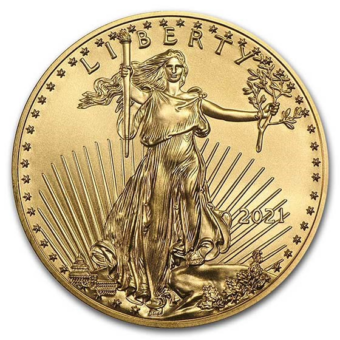Inflation and corporate earnings anticipation dominated the market’s mood this past week.
Wall Street is curious if the Federal Reserve will continue to increase interest rates after two key measures of prices were lower than predicted. They also wonder if banks will make enough profit to boost the finance industry after some regional banks faced issues.
In March, the government's Consumer Price Index (CPI) was lower than expected. The CPI measures the changes in prices that consumers pay for goods and services. This index increased only 0.1%, while people thought it would rise 0.2%. Over a year, it was up 5%, instead of the 5.1% estimate.
The Producer Price Index (PPI), which measures the cost of materials for manufacturers, dramatically fell 0.5% compared to the previous month. If their costs go up, it usually means higher prices for consumers. Economists thought the PPI wouldn't change, so the decline seems like a good sign. When you remove food and energy prices, core wholesale prices dropped 0.1%, which is better than the 0.2% increase that was expected.
Compared to last year, the PPI has risen 2.7%, while last month it was up 4.6%. Excluding food and energy prices, the core PPI increased 3.4%, compared to last month's 4.4% increase.
The Labor Market is Finally Showing Signs of Softening
More people filed for unemployment benefits than expected, with 239,000 claims compared to the predicted 235,000. This might actually help the stock market. Jobless claims are at their highest in over a year, but they're still relatively low. The Federal Reserve has been trying to slow down the economy and job market to control inflation, but the job market hasn't been greatly affected yet.
Unemployment benefit applications show the general trend of people being laid off. Many big tech companies that hired a lot during the pandemic are now cutting jobs. Amazon, Facebook, IBM, Microsoft, Salesforce, and DoorDash have all started laying off workers, some since last November.
However, there's more job market weakening ahead. US employers added 236,000 jobs in March, which means the economy is still growing somewhat, even though the Fed raised interest rates nine times in the past year to control inflation.
The unemployment rate is now at 3.5%, but the Fed thinks it might go up to 4.5% by the end of the year. This kind of increase is significant and has been linked to recessions in the past. Also, the Labor Department reported that US job openings dropped in February to 9.9 million, the lowest since May 2021.
What Does the Economic Data Show?
Combining the Producer Price Index (PPI) and the March Consumer Price Index (CPI) reports suggests that inflation might be slowing down a bit. However, there's still a risk of a recession, so the economic data is a mix of good and bad news.
Inflation seems to be cooling down, but it's still high. Prices are going down in some areas like energy, used cars, and groceries, but they're going up in others like housing and dining out. Housing costs had one of the biggest increases, going up 8.2% compared to last year.
The drop in "input costs" (through PPI) provides more proof that consumer prices might be falling. Changes in production costs often end up affecting prices in stores.
Overall, the decrease in inflation was good news for the market. After the CPI report, there was a positive reaction, with stock market futures, gold prices, and oil prices going up. Treasury yields and the US dollar went down. The response to the PPI release was less enthusiastic for stock market futures, but gold prices increased, Treasury yields dropped, and the US dollar weakened.
Also, retail sales have declined more than anticipated, experiencing the weakest annual growth rate since June 2020. This downturn highlights concerns over consumer spending and the potential impact on the broader economy. On a positive note, this situation bolsters the argument that inflation may be gradually subsiding. However, on the flip side, it raises concerns about the potential implications for economic growth and stability.
What’s Going On in the Precious Metals Space?
Gold and silver reach 13-month highs due to mild US inflation, weak US dollar, and rising oil prices
On Thursday, April 13, 2023, gold and silver prices went up significantly, reaching their highest levels in 13 months. This increase is due to a mild US inflation report, a weakening US dollar, and increasing crude oil prices. Gold traders now believe they can break the all-time high record of $2,078.80 soon. Gold in June was last up $28.40 at $2,053.20, while silver in May was up $0.437 at $25.90.
The Fed's focus on employment rather than inflation is currently limiting gold's growth. The March 2023 jobs report showed a stable job market, which may not require the Fed to change its policies. Gold is trading above $2,000 an ounce but has remained in a tight range around $1,800 for the last three years. The upcoming Federal Reserve meeting in May and other factors will be important for gold's future. Possible factors that could increase gold prices include mistakes in Fed policies, more inflation, geopolitical conflicts, and a weaker US dollar.
Manufacturing (Along with Earnings) is the Big Story Next Week
On Monday, April 17th, we'll see the Empire State Manufacturing report for April and the Home Builder Confidence Index for April.
On Tuesday, April 18th, the Housing Starts report for March will be released.
On Wednesday, April 19th, the Federal Reserve will release the Beige Book, and New York Fed President Williams will give a speech.
On Thursday, April 20th, there will be several reports, including Initial Jobless Claims for April 15th, Continuing Jobless Claims for April 8th, the Philadelphia Fed Manufacturing Survey for April, Existing Home Sales for March, and the US Leading Economic Indicators for March.
Finally, on Friday, April 21st, we'll see the S&P Flash US Services PMI and the S&P Flash US Manufacturing PMI for April.






















